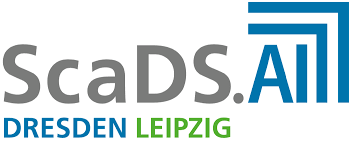
|
Clustering Approaches for Multi-source Entity Resolution
Dissertation, Universität Leipzig |
|
| Dissertation |
Futher information: https://ul.qucosa.de/landing-page/https%3A%2F%2Ful.qucosa.de%2Fapi%2Fqucosa%253A76943%2Fmets%2F/
Abstract
Entity Resolution (ER) or deduplication aims at identifying entities, such as specific customer or product descriptions, in one or several data sources that refer to the same real-world entity. ER is of key importance for improving data quality and has a crucial role in data integration and querying. The previous generation of ER approaches focus on integrating records from two relational databases or performing deduplication within a single database. Nevertheless, in the era of Big Data the number of available data sources is increasing rapidly. Therefore, large-scale data mining or querying systems need to integrate data obtained from numerous sources. For example, in online digital libraries or E-Shops, publications or products are incorporated from large number of archives or suppliers across the world or within a specified region or country to provide a unified view for the user. This process requires data consolidation from numerous heterogeneous data sources which are mostly evolving. By raising the number of sources, data heterogeneity and velocity as well as the variance in data quality is increased. Therefore, multi-source ER, i.e. finding matching entities in an arbitrary number of sources, is a challenging task. Previous efforts for matching and clustering entities between multiple sources (> 2) mostly treated all sources as a single source. This approach excludes utilizing meta data or provenance information for enhancing the integration quality and leads up to poor results due to ignorance of the discrepancy between quality of sources. The conventional ER pipeline is comprised of blocking, pair-wise matching of entities, and classification. In order to meet the new needs and requirements, holistic clustering approaches that are capable of scaling to many data sources are needed. The holistic clustering-based ER should further overcome the restriction of pairwise linking of entities by making the process capable of grouping entities from multiple sources into clusters. The clustering step aims at removing false links while adding missing true links across sources. Additionally, incremental clustering and repairing approaches need to be developed to cope with the ever increasing number of sources and new incoming entities. To this end, we developed novel clustering and repairing schemes for multi-source entity resolution. The approaches are capable of grouping entities from multiple clean (duplicate-free) sources as well as handling data from an arbitrary combination of clean and dirty sources. The multi-source clustering schemes exclusively developed for multi-source ER can obtain superior results compared to general purpose clustering algorithms. Additionally, we developed incremental clustering and repairing methods in order to handle the evolving sources. The proposed incremental approaches are capable of incorporating new sources as well as new entities from existing sources. The more sophisticated approach is able to repair previously determined clusters and consequently yields improved quality and a reduced dependency on the insert order of the new entities. To ensure scalability, the parallel variation of all approaches are implemented on top of the Apache Flink framework which is a distributed processing engine. The proposed methods have been integrated in a new end-to-end ER tool named FAMER (FAst Multi-source Entity Resolution system). The FAMER framework is comprised of Linking and Clustering components encompassing both batch and incremental ER functionalities. The output of Linking part is recorded as a similarity graph where each vertex represents an entity and each edge maintains the similarity elationship between two entities. Such a similarity graph is the input of the Clustering component. The comprehensive comparative evaluations overall show that the proposed clustering and repairing approaches for both batch and incremental ER achieve high quality while maintaining the scalability.


